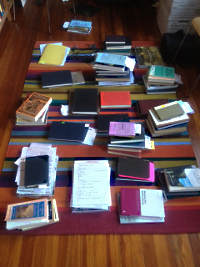 As I was saying before I allowed myself to be interrupted by … “stuff”, I landed a job at another university as a library paraprofessional.1 Money, security, pension plan, and health insurance. I have been spectacularly fortunate; it’s a great job, with great colleagues.
As I was saying before I allowed myself to be interrupted by … “stuff”, I landed a job at another university as a library paraprofessional.1 Money, security, pension plan, and health insurance. I have been spectacularly fortunate; it’s a great job, with great colleagues.
So far, so good.
One of this new job’s unexpected perks was the opportunity to pitch a proposal for a library exhibit. I did and it was accepted. Consequently, for the past few months, I’ve been working on an exhibit focused on the archaeology of “Prehistoric Wessex”, its appearances in popular culture, and (more precisely) the ways in which people represent places in image and text. Before anyone jumps in: Yes, Hardy is in there. As are Camden, Stukeley, Jones,2 a selection of nineteenth century periodicals, film and TV clips, and numerous other things.
Right now, I won’t say more about the content, but I must admit that the process has been an eye-opening experience–and quite different from that with the Elements of Interpretation exhibit of a few years ago. On the one hand, being free to select materials from all of the library collections here rather than just one branch library has been liberating. On the other hand, this time, the exhibit space is much larger. With so much library material to choose from, filling that space might not have been so hard but ensuring the exhibit did not turn into a “big baggy monster”3 was challenging. Every step of the way, it’s been necessary to balance showing off the diversity of the library’s collections with the need to build an argument for any one item’s inclusion.
In the end, I think that the pitfall of “bagginess” has been avoided and everything coheres nicely.4 We’ll just have to see what everyone else thinks.
I finished a draft of the exhibit text, yesterday. I’ll spend this weekend reviewing and revising what I’ve written along with the contributions of my two collaborators (Jon and Katy). On Monday, the text goes to a copy editor; two to three weeks later, we expect to get it back so that we can make any necessary changes. The text has to be finalized, laid out and formatted (with images) for the catalogue, and sent to the printers, in time for a March opening.
All of which is a round about way of explaining the mess on the floor of the spare room.
1 Please see the usual disclaimer about none of the views expressed here being those of my employer, etc.
2 Inigo Jones, rather than the other Jones we normally associate with archaeology.
3 I owe this phrase entirely to my wife.
4 Fingers crossed.


